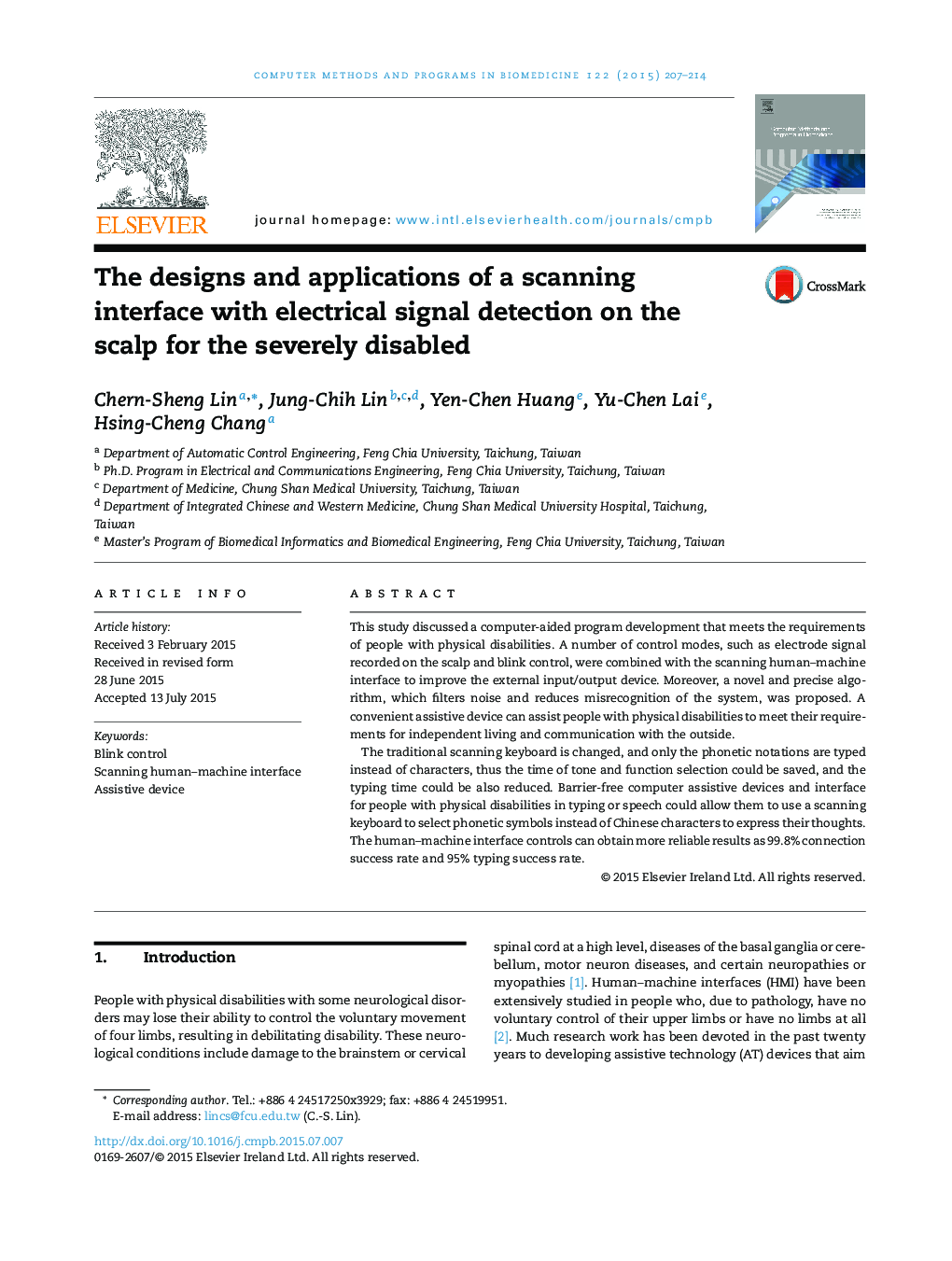| Article ID | Journal | Published Year | Pages | File Type |
|---|---|---|---|---|
| 468694 | Computer Methods and Programs in Biomedicine | 2015 | 8 Pages |
•A scanning interface with electrical signal detection of the head is designed.•A algorithm filters noise and reduces misrecognition of the system.•The traditional scanning keyboard is modified.•The typing time could be reduced.•It can obtain more reliable results as 95% success rate.
This study discussed a computer-aided program development that meets the requirements of people with physical disabilities. A number of control modes, such as electrode signal recorded on the scalp and blink control, were combined with the scanning human–machine interface to improve the external input/output device. Moreover, a novel and precise algorithm, which filters noise and reduces misrecognition of the system, was proposed. A convenient assistive device can assist people with physical disabilities to meet their requirements for independent living and communication with the outside.The traditional scanning keyboard is changed, and only the phonetic notations are typed instead of characters, thus the time of tone and function selection could be saved, and the typing time could be also reduced. Barrier-free computer assistive devices and interface for people with physical disabilities in typing or speech could allow them to use a scanning keyboard to select phonetic symbols instead of Chinese characters to express their thoughts. The human–machine interface controls can obtain more reliable results as 99.8% connection success rate and 95% typing success rate.
